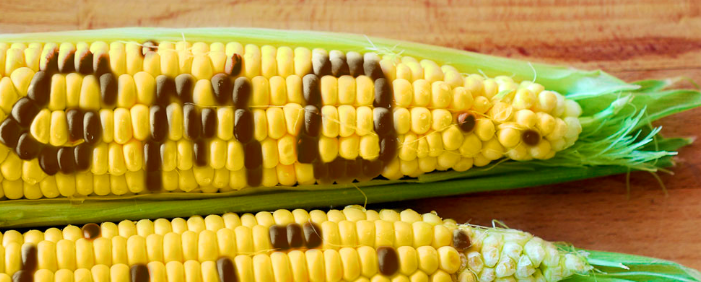
A GMO is a genetically modified organism in which a foreign gene has been inserted. The scientific techniques used to create corn or soy or any GM plant are explained here.
A GMO is Genetically Modified Organism. That is, an organism into which a gene absent in the wild has been inserted, or an organism whose expression of a gene has been voluntarily modified. This gene can come from any living species , provided it has added various elements necessary for its expression in the recipient organism. This gene can code for various proteins of very general interest for health or agriculture . This is the case for example of a factor allowing coagulation blood (a factor absent in hemophiliacs), or a protein that allows a plant to better resist disease.
When we talk about GMOs, it’s hard to avoid a passionate debate between GMO advocates and their opponents. Debate conveying all kinds of false ideas, clichés and fears to the public. Often the debate mixes GMOs, malnutrition, food risks and globalization. It is therefore the duty of scientists to leave their laboratories to speak, to explain, to discuss, to twist their necks with the received ideas and to finish with this image that the GMOs would be necessarily a threat for our society.
The most publicized GMOs are plants (corn, rapeseed, wheat …), but it is important to know that many other GMOs exist and are used. They are indispensable for any scientific research in the field of life sciences.
But they are also widely used in health: indeed many bacteria have been genetically modified to express viral proteins used in the composition of vaccines . This avoids the use of attenuated viral strains, completely eliminating the risk of contracting the disease during vaccination . In theory, any living organism can be transformed into a GMO; so far it has been possible to genetically modify many mammals (goats, mice …), plants, bacteria and probably many others.
How is a GMO made?
It is a long and delicate process, an example of which is given in the figure below. To explain it we will take the example of a plant in which we try to introduce a gene of interest (we will call this gene YFG).
The first step is to clone the YFG gene in a plasmid . A plasmid is a small molecule of circular DNAthat multiplies at the same time as chromosomes . To obtain large quantities of this plasmid it is first introduced into a bacterium – E. coli – (the advantage of E. coli is that it multiplies very rapidly). Generally an antibiotic is used to allow growth only bacteria that have received the plasmid (the plasmid carries a resistance geneto the antibiotic). Thus, after a night of culture, enough bacteria are obtained in order to extract the pure plasmid in large quantities.
Then it is transferred to the cells we are interested in (in our case, plant cells). There are several ways to transfer a plasmid into a plant cell. Either the cells are bombarded with plasmid-coated small beads, or another bacterium, A. tumefaciens, is used which naturally has the ability to transfer part of its DNA into the cells of the plant it infects. Whatever the organism, the efficiency of a DNA transfer is never 100%; it is therefore always necessary to select cells that have received DNA from those that do not. If the plasmid has a herbicide resistance genethese can be used to select only the plasmid carrying cells. However, this selection strategy is now commonly replaced by other means of selection using neither antibiotics nor herbicides. An essential criterion is the stability of the YFG gene in its new host.
Once the plant starts to grow, it is necessary to ensure the expression of the YFG gene. Indeed, during transfer into the plant the gene has been integrated at random in a chromosome, but it is known that the place of integration in the chromosomes strongly influences the ability of a gene to express itself. Since the gene has been inserted into the cell that gave rise to the plant, it means that all the cells of the plant will have the YFG gene, but this gene may not be expressed in all the cells (the expression of many genes is very specific to tissue) it will depend on where it is integrated into the chromosome.
The development of plasmids has been greatly improved in recent years. Now it is possible to remove from the plasmid all the selection genes used in the bacteria. Thus the newly GMO cell does not have an antibiotic resistance gene that could be disseminated in nature.